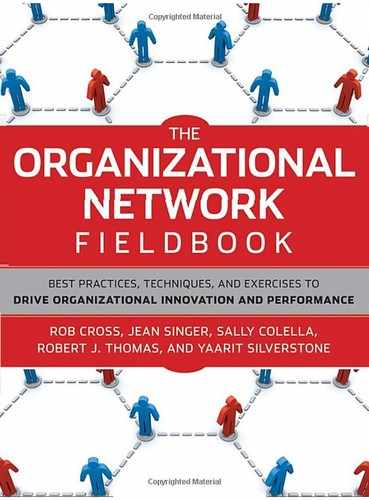Chapter 15. BUILDING A COLLABORATIVE INNOVATION NETWORK
Wendi Backler[]
Most innovation happens outside the boundaries of a single organization. In the vast majority of industries, less than 30 percent of all patents on new inventions belong to the top 10 competitors in the industry. For example, the top 10 pharmaceutical companies, with tens of thousands of researchers and billions of dollars invested in research, account for only 12 percent of all pharmaceutical patents filed.[] The remaining 88 percent belong to smaller companies, niche players, individual scientists, academics or their institutions, start-ups, and "garage" inventors, with many players holding only one or two patents—a manifestation of Chris Anderson's "long tail" of innovation.
Figuring out how to build a collaborative innovation network that taps into this long tail is a strategic imperative for all companies that depend on innovation for a competitive advantage. In fact, evidence is rapidly building that firms that have recognized this fact are outperforming those that have not.
Procter & Gamble has embraced the long tail of innovation. In 2001, P&G set out to build a collaborative innovation network with the lofty goal of sourcing 50 percent of all new innovations externally. By 2007, P&G had doubled the size of its innovation portfolio and increased its innovation yield 3.5 times. Now 35 percent of all projects in its innovation portfolio result in successful new profit-earning products. (Compare this to just 10 percent back in 2001, when P&G relied exclusively on internal innovation.) In 2008, 51 percent of all new ideas developed at P&G originated externally, from customers, suppliers, or communities such as NineSigma. Insiders boast of better processes, faster development times, and superior ideas.
A collaborative innovation network reaches beyond a firm's boundaries; it taps into and connects talent regardless of where it dwells; it is diverse and often cross-disciplinary; and it builds relationships in which knowledge and discovery are shared so that learning is both fostered and accelerated.
How does an organization build, sustain, and manage a collaborative innovation network? What are some of the challenges and issues to watch for along the way? What does the process look like, and how do you know you're getting it right?
This chapter illustrates one approach through the example of the Myelin Repair Foundation (MRF), an innovative nonprofit biotech research organization that was founded to manage and nurture a collaborative innovation network. We will follow the development of the MRF from its inception and describe how it initially overcame a number of key challenges to catalyze and establish the core of the network. We will look at the actions taken by the founders to build and nurture it, and ensure its successful functioning. We will then take an in-depth look at the specific processes and methods used to extend the network for greater success—and to evaluate the effectiveness of its collaboration model. In particular, we will detail a process, culminating in a workshop, that helped the MRF navigate, understand, and leverage the scientific networks that existed beyond its core network.
